There has been quite a bit going on in the shop the past few weeks. I have wrapped up a couple of projects and have started a few new ones as well. Among these are a black walnut desk, some butcher block style countertops, and numerous new jigs and tools to make my work easier; however more notably I have began construction on a new archtop solid body. It has some of the design characteristics of a PRS, but is a little more edgy and aggressive looking. It’s got a black walnut/maple body, and the carved top is from buckeye burl. My fiancé came up with the name Hell Cat, and seemed fitting for the aggressive body style with the crazy buckeye top.
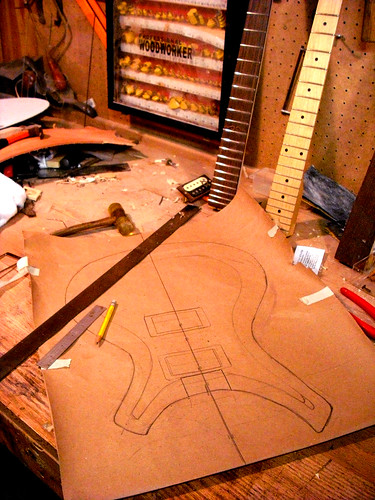
this is the initial concept design for this guitar
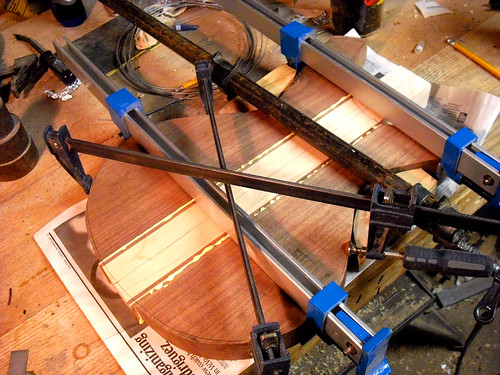
the body has walnut wings, with a center beam of maple this will give it some tonal variety.
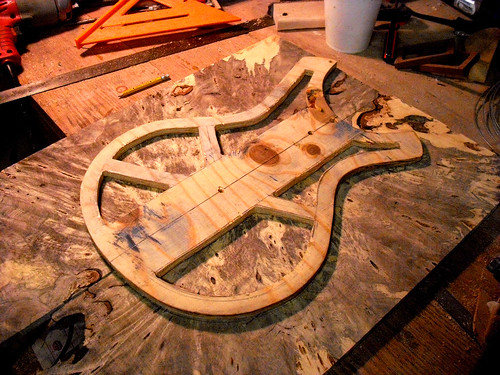
here is the buckeye burl that will grace the top of this guitar, absolutely stunning figure in this peice.
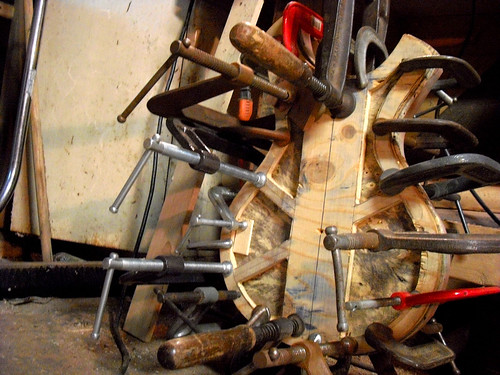
clamping this one was a pain, the burl was so dry that it curled almost instantly when coming in contact with the glue, made it tricky to glue up.
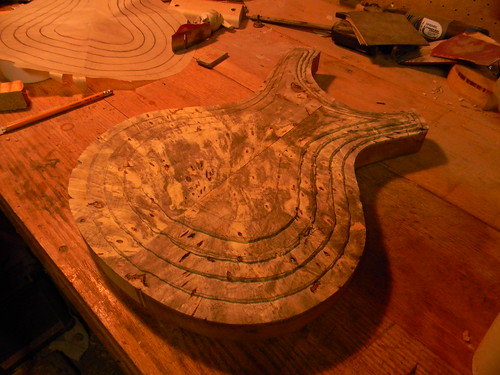
here is the first step in carving the top, i smooth out those stair steps to acieve the desired contour.

here is the scarf joint for the neck, it is also black walnut and has some very beautiful figure in it as well.


